- News
- Reviews
- Bikes
- Accessories
- Accessories - misc
- Computer mounts
- Bags
- Bar ends
- Bike bags & cases
- Bottle cages
- Bottles
- Cameras
- Car racks
- Child seats
- Computers
- Glasses
- GPS units
- Helmets
- Lights - front
- Lights - rear
- Lights - sets
- Locks
- Mirrors
- Mudguards
- Racks
- Pumps & CO2 inflators
- Puncture kits
- Reflectives
- Smart watches
- Stands and racks
- Trailers
- Clothing
- Components
- Bar tape & grips
- Bottom brackets
- Brake & gear cables
- Brake & STI levers
- Brake pads & spares
- Brakes
- Cassettes & freewheels
- Chains
- Chainsets & chainrings
- Derailleurs - front
- Derailleurs - rear
- Forks
- Gear levers & shifters
- Groupsets
- Handlebars & extensions
- Headsets
- Hubs
- Inner tubes
- Pedals
- Quick releases & skewers
- Saddles
- Seatposts
- Stems
- Wheels
- Tyres
- Health, fitness and nutrition
- Tools and workshop
- Miscellaneous
- Buyers Guides
- Features
- Forum
- Recommends
- Podcast
review
£4,399.00
VERDICT:
Fast and comfortable race bike with predictable braking rain or shine, but could be lighter
Weight:
7,800g
Contact:
At road.cc every product is thoroughly tested for as long as it takes to get a proper insight into how well it works. Our reviewers are experienced cyclists that we trust to be objective. While we strive to ensure that opinions expressed are backed up by facts, reviews are by their nature an informed opinion, not a definitive verdict. We don't intentionally try to break anything (except locks) but we do try to look for weak points in any design. The overall score is not just an average of the other scores: it reflects both a product's function and value – with value determined by how a product compares with items of similar spec, quality, and price.
What the road.cc scores meanGood scores are more common than bad, because fortunately good products are more common than bad.
- Exceptional
- Excellent
- Very Good
- Good
- Quite good
- Average
- Not so good
- Poor
- Bad
- Appalling
Canyon's Ultimate CF SLX race bike has long been a popular bike with road.cc testers and readers, and it's now available with disc brakes. The new version offers the same brilliant performance and handling but benefits from improved braking in all weathers, not only the rain but also in the dry.
On the downside, it's heavier and more expensive than a rim-braked Ultimate with a comparable specification, but if you really want a race bike with disc brakes, this is one of the best choices on the market right now. The good thing is Canyon offers a full range of Ultimates so you can choose the braking system you prefer.
Buy Canyon Ultimate CF SLX Disc 8.0 Di2
Ride and handling
In its rim-braked guise, the Ultimate CF SLX is one of the very best performance road bikes you can buy, providing that wonderful blend of weight, stiffness, comfort and speed that you want in a race or high-performance bike. And if you were to ride this disc-equipped version blindfolded (I'm not for one moment advising you do that) you would be hard-pushed to detect any significant difference.
Until you pull the Shimano brake levers, that is. Then the difference in braking performance becomes all too apparent. The hydraulic disc brakes, with 160mm rotors front and rear, are simply superior in every situation to even perfectly set up rim brakes in perfect conditions. And I say that with extensive testing of all rim brake and wheel combinations over years of riding in all conditions.
There's no getting away from the extra weight on the scales. While Canyon has managed to minimise the weight increase in the updated frame, the disc brakes and the choice of wheels has meant the weight has gone up. But as I found during many, many rides on the new bike, unless you're a weight weenie or ride up mountains every day and get the chair lift back down, in real-world riding here in the UK the difference really is of a smaller concern than the benefits the disc brakes bring to the package.
The pros might not need disc brakes (they have closed roads which help massively) but I couldn't care less what the pros need or want. For cycling enthusiasts who want the performance and sharp handling of a race bike but have to deal with all the road conditions, traffic and hazards on a daily basis, there's a good case to be made for disc brakes.
Against the stopwatch there's no denying a lighter bike will be marginally faster up a climb, but when's the last time you timed yourself up a climb? I definitely never felt at a disadvantage when riding with friends on lighter non-disc bikes and let's remember it's the legs, body weight and fitness that really matter on a climb. Granted if you're a pure climber and it's the difference between winning a Grand Tour the extra weight might be a factor to consider when choosing a bike, but I didn't feel any significant penalty riding this bike on my local climbs at a normal person's pace.
What goes up must come down, and it's on the descents that the disc brakes really come into their own. There's no getting away from it, a disc brake is a better brake than a rim brake, in any sort of weather. With disc brakes, the Ultimate inspires confidence and there's no reason to hold back even if the weather is doing its best to temper your enthusiasm. And it's not just about getting down faster, but getting down with more control and confidence. For sure there's a limit in the tyre contact patch, but that never came into question during riding, even in the rain.
What really appeals about disc brakes is the near effortless manner you can control the brakes, using a solitary finger on the brake lever to control your speed through sweeping bends or bring everything to a speedy halt for a tight junction or roundabout. They're quiet in the dry but they can occasionally be noisy in the rain, but it appears to only happen when lightly activating the brakes, say slowing towards a junction. Properly engage the brakes and the noise vanishes.
Though it's an out-and-out race bike, it's not harsh and punishing even when riding along rough roads. While not in the same league as Canyon's Endurace CF SLX, the ability of the Ultimate to provide a composed and settled ride and avoid getting choppy or skittish is nothing short of impressive. Despite the slightly beefed up carbon frame, it's without doubt a race bike you can ride in comfort all day long.
If you wanted to extract even more comfort, the frame and fork, thanks to the disc brakes, will take up to 30mm tyres, though I found the stock 25mm tyres ample for delivering a smooth ride on my local roads.
The Ultimate CF SLX uses the company's Sport Pro geometry, the company's raciest setup and used by the professional racers it sponsors. There are some small differences in the numbers but importantly the reach and stack remain the same across the two models.
The chainstays have grown 5mm from 410mm to 415mm to accommodate the disc brakes, and the wheelbase is, therefore, longer, up from 988mm to 996mm, but it's such a small difference that you'll be hard-pressed to detect it without side-by-side comparison testing. The disc bike hasn't lost much of its agility and if anything there's a little more composure at higher speeds.
Frame and equipment
The frame is essentially based on the regular Ultimate CF SLX and there's the same tube shaping, including the D-shaped down tube that was introduced on the latest generation Ultimate to eke out more aerodynamic performance. Canyon claimed a 7.4 watt saving over the previous Ultimate with this change, and it reckons disc brakes only give away 1.5% to the rim version at 45kph.
Canyon also introduced an integrated seat clamp to the latest version of the Ultimate, with the internal seat clamp positioned well below the top of the seat tube to provide a claimed 15% improvement in vertical deflection. Team that with the VCLS seatpost and it delivers an outstandingly comfortable ride.
To attach the Shimano brake calipers, Canyon has used the increasingly common flat mount standard, providing a clean appearance. Quick releases are out and 12mm thru-axles at both ends are in, with a handy lever on the front and an Allen bolt operated rear. Don't forget your multitool, but I'd prefer a lever on the back as well for simplicity.
Disc rotor size is open for debate, but Canyon conducted its own testing and found 160mm to be preferable to dealing with heat build-up in 140mm rotors, so the Ultimate sports the bigger rotors front and rear.
The carbon fibre layup has been refined to deal with the extra forces placed on the frame and fork by the disc brakes, but the weight is a claimed 820g for a size medium, about 70g heavier than the rim brake version. On the plus side, there's now room for up to 30mm tyres, unprecedented for a race bike that's not a Paris-Roubaix special. There's no rear brake bridge, which helps increase tyre clearance and allows the super skinny seat stays to be more effective at providing comfort-boosting deflection.
There is also the same Di2-compatible internal cable routing, and Canyon has tucked the hydraulic hoses inside the frame and fork. It's very neat and I experienced no rattles throughout testing. The head tube is straight, with a 1 1/4-inch untapered steerer. The idea is to keep the frontal area down for better aerodynamics, and I felt no lack of stiffness compared to a tapered head tube. The dropouts are made from carbon fibre to shed a few more grams.
Equipment on this £4,399 model comprises a Shimano Ultegra Di2 groupset with a semi-compact 52/36t chainset and RS805 hydraulic disc brakes paired with 160mm centre lock rotors. What can I say about this electronic shifting/hydraulic braking setup that hasn't been said before? It's excellent: the gears work a treat all the time; the battery lasts for ages; and the brakes are the best on the market right now, with excellent feel and power.
The VCLS seatpost and Fizik Antares R5 saddle go a long way to providing incredible seated comfort. The saddle noticeably deflects backwards when the rear wheel encounters a ridge or lump on the road, you can actually look down and see the saddle moving back and forth when you're riding along.
Aero handlebars are no longer only found on aero bikes; Canyon has rolled them out on its top-end Ultimate and Endurace models. The H36 Aerocockpit CF bar is surprisingly comfortable handlebar and while there's no huge amount of detectable flex when riding out of the saddle or sprinting down the road, it does appear to provide a reasonable amount of vibration damping. I do prefer the narrow round shape of a regular handlebar but that said, the top section of the aero handlebar is a comfortable place to rest your hands.
Rather neatly, the Di2 junction box is concealed in a small recess on the underside of the handlebar though it means charging the battery is a bit of a fiddle because you have to first remove the carbon plate that secures it in place.
Canyon has looked to accentuate the aero properties of this model by fitting deep section Mavic Cosmic Pro Carbon wheels, which certainly amp up the appearance of the bike.
'With the Mavic Cosmic Pro Carbon Disc and the Ultegra hydraulic brakes, you'll get all the benefits of carbon wheels and none of the drawbacks,' says Canyon.
What benefits are those? Well, they're more aerodynamic than a shallow section rim, and there's no denying they feel very fast when riding. But at 1,770g they're not exactly light and on a bike designed to be a great all-rounder that excels on the climbs, the choice of a heavy deep section wheel seems an odd one. I'd take a lighter, shallow rim for the type of riding the Ultimate is intended for.
The Cosmic Pro Carbon Discs are £975 a pair and use an existing Mavic technology where carbon fibre fairings are bonded to aluminium rims, which means they're a bit heavier than full carbon wheels. The 45mm NACA rim profile does deliver a fast ride but they are prone to instability in strong cross winds compared to more modern carbon rim shapes.
Mavic's own Yksion Pro Griplink C tyres come fitted to the wheels, part of Mavic's desire to supply complete tyre and wheel systems. They are 25mm wide but don't feel as smooth or compliant on rough roads or as grippy in the wet as higher quality tyres, so I'd probably look to upgrade them if I was buying the bike.
Conclusion and rivals
There's no getting away from the fact this bike is nearly a kilogram heavier than the cheaper (£3,599) Ultimate CF SLX 8.0 Di2 also with a Ultegra Di2 groupset, but the extra weight isn't all in the frame and disc brakes; Canyon has specced similarly-priced Mavic Ksyrium Pro Exalith SL WTS wheels which are some 400g lighter than the deep section Cosmic Pro Carbon wheels. It seems a shame Canyon hasn't fitted lighter wheels to the disc version to reduce the weight difference between the two models.
The good thing is that Canyon isn't forcing you to buy into disc brakes, it is continuing to offer both rim and disc versions so you can make your choice. I've ridden both bikes and loved the performance of both, but choice comes down to whether your preference is for weight or braking performance. It's a tricky one, but for my riding I found the superior brakes were of greater benefit than the weight difference.
If weight is an issue for you but you definitely want disc brakes, the lightest disc-equipped race bike I've so far tested was the Specialized S-Works Tarmac Disc. It came in at 6.9kg and offered scintillating performance, but the £8k price tag was tough to stomach. It's since been supplanted by the S-Works Tarmac Disc eTap (£8,250).
Another worthy rival is the Focus Izalco Max, which costs £3,999 for a similar build of Ultegra Di2 but comes in with a lower weight, 7.5kg when I tested it last year. Like the Canyon, the Focus manages to offer that magic blend of race stiffness and all day comfort. And I'm a big fan of the RAT thru-axles.
Another option to consider is the Cannondale SuperSix Evo Disc which manages to retain the fast handling and sweet balance of the original, but with the greater stopping power and control of disc brakes. An Ultegra Di2 model will set you back the same £3,999 as the Focus, so once again the Canyon offers the lower price tag.
Verdict
Fast and comfortable race bike with predictable braking rain or shine, but could be lighter
road.cc test report
Make and model: Canyon Ultimate CF SLX Disc 8.0 Di2
Size tested: 56cm
About the bike
State the frame and fork material and method of construction. List the components used to build up the bike.
FRAME CANYON ULTIMATE CF SLX
FORK CANYON ONE ONE FOUR SLX DISC
HEADSET ACROS | CANYON
REAR DERAILLEUR SHIMANO ULTEGRA DI2, 11S
DERAILLEUR HANGER DERAILLEUR HANGER NO. 40
FRONT DERAILLEUR SHIMANO ULTEGRA DI2, 11S
BRAKE/SHIFT LEVERS SHIMANO DI2 ST-R785 HYDRAULIC
BRAKES SHIMANO BR-RS805
CASSETTE SHIMANO ULTEGRA, 11S
WHEELSET MAVIC COSMIC PRO CARBON DISC
TYRES MAVIC YKSION PRO GRIPLINK C
CRANKS SHIMANO ULTEGRA, 11S
CHAINRINGS 52 | 36
CHAIN SHIMANO CN-HG700-11
BOTTOM BRACKET SHIMANO PRESSFIT
COCKPIT CANYON H36 AEROCOCKPIT CF
HANDLEBAR TAPE CANYON ERGOSPEED GEL
SADDLE FIZIK ANTARES R5
SEAT POST CANYON S13 VCLS CF (15 - 35 MM SETBACK)
Tell us what the bike is for, and who it's aimed at. What do the manufacturers say about it? How does that compare to your own feelings about the bike?
Canyon says:
For a decade the Ultimate series has stood at the pinnacle of the Canyon road bike range. These framesets are meticulously designed to combine low weight and maximum stiffness with outstanding ride quality to create an unparalleled overall package. With our Sport Pro Geometry the rider can achieve the ideal position on the bike for optimum performance and comfort for hours in the saddle. Available in a wide range of carbon or aluminium models, these machines have been proven at the top level for years and are the ride of choice for pros and enthusiasts alike.
If you want to buy a super sweet road bike with disc brakes, then the Ultimate CF SLX Disc 8.0 Di2 will be the way to go. The carbon frame has been given our Sport Pro Geometry, the same sort of fit that guys like Nairo Quintana like to have for those long days in the saddle tackling some Pyrenean climbs. Though when Shimano first released their electric shifting groupset, it represented the height of unattainable desirability even if it also sniffed a little of conspicuous consumption, now electric groupsets proliferate the pro and amateur ranks, proving that cool tech can and should become a mainstream necessity. Since the Ultimate CF SLX Disc 8.0 Di2 comes equipped with the Ultegra version, you can feel like you are being discerning in your purchasing, while still getting the sweetness that is Di2. The H36 Aero Cockpit CF has to be one of the more eye-catching design features of the whole bike, which also reduces your drag. For the other touch point, the S13 VCLS CF seatpost works to reduce road vibrations while still providing the necessary lateral stiffness. It joins forces with the Fizik Antares R5 saddle to give you the support you need to power the pedals. If you've stuck with alu-rimmed wheels for practical as well as performance reasons, the Mavic Cosmic Pro Carbon Disc will change your mind about what an amazing difference a great pair of carbon wheels can make to a bike. With the Mavic Cosmic Pro Carbon Disc and the Ultegra hydraulic brakes, you'll get all the benefits of carbon wheels and none of the drawbacks. Using the Mavic Yksion tires will also guarantee maximum traction while cornering and great response to wet road conditions. If you are looking to purchase a top-quality race bike, you should treat yourself to an Ultimate CF SLX Disc 8.0 Di2 and feel what the best race bike of the year feels like.
Frame and fork
Overall rating for frame and fork
9/10
Tell us about the build quality and finish of the frame and fork?
Canyon doesn't make its own frames but the quality control is clearly high as the build quality is up there with the best.
Tell us about the materials used in the frame and fork?
Full carbon fibre frame and fork with high-quality finish and appearance.
Tell us about the geometry of the frame and fork?
It uses Canyon's raciest and most aggressive Sport Pro geometry, the same as the pros use, and provides fast and nimble handling.
How was the bike in terms of height and reach? How did it compare to other bikes of the same stated size?
The size medium fitted me really well, luckily as the one-piece stem and handlebar doesn't allow easy stem length adjustments.
Riding the bike
Was the bike comfortable to ride? Tell us how you felt about the ride quality.
Race bikes traditionally aren't known for their comfort, but the Ultimate offers a really smooth and compliant ride. It's good enough to ride all day.
Did the bike feel stiff in the right places? Did any part of the bike feel too stiff or too flexible?
Get out of the saddle and give it some serious power and the bike responds with a level of sharpness you expect from a race bike.
How did the bike transfer power? Did it feel efficient?
There's no delay or lag when putting down the power.
Was there any toe-clip overlap with the front wheel? If so, was it a problem?
None.
How would you describe the steering? Was it lively, neutral or unresponsive? Neutral
Tell us some more about the handling. How did the bike feel overall? Did it do particular things well or badly?
It's an agile and nimble bike with great cornering manners.
Which components had the most effect (good or bad) on the bike's comfort? would you recommend any changes?
The Fizik saddle and VCLS saddle combine to create a very comfortable ride.
Which components had the most effect (good or bad) on the bike's stiffness? would you recommend any changes?
The handlebar balances the demands of stiffness and comfort well, the vertical stiffness isn't so high that you get an unmanageable level of feedback through the front-end.
Which components had the most effect (good or bad) on the bike's efficiency? would you recommend any changes?
You could save weight with some lighter wheels, but the aero performance of the Mavic Cosmic wheels does impress when the speed rises.
Rate the bike for efficiency of power transfer:
9/10
Rate the bike for acceleration:
8/10
Rate the bike for sprinting:
8/10
Rate the bike for high speed stability:
9/10
Rate the bike for cruising speed stability:
8/10
Rate the bike for low speed stability:
9/10
Rate the bike for flat cornering:
8/10
Rate the bike for cornering on descents:
9/10
Rate the bike for climbing:
7/10
The drivetrain
Rate the drivetrain for performance:
9/10
Rate the drivetrain for durability:
8/10
Rate the drivetrain for weight:
8/10
Rate the drivetrain for value:
8/10
Wheels and tyres
Rate the wheels for performance:
7/10
Rate the wheels for durability:
7/10
Rate the wheels for weight:
6/10
Rate the wheels for comfort:
8/10
Rate the wheels for value:
8/10
Rate the tyres for performance:
7/10
Rate the tyres for durability:
8/10
Rate the tyres for weight:
8/10
Rate the tyres for comfort:
7/10
Rate the tyres for value:
8/10
Controls
Rate the controls for performance:
9/10
Rate the controls for durability:
8/10
Rate the controls for weight:
8/10
Rate the controls for comfort:
8/10
Rate the controls for value:
8/10
Your summary
Did you enjoy riding the bike? Yes
Would you consider buying the bike? Yes
Would you recommend the bike to a friend? Yes
Rate the bike overall for performance:
9/10
Rate the bike overall for value:
8/10
Use this box to explain your score
It's cheaper than similarly equipped disc race bikes so it offers good value for money, but if you don't want disc brakes the regular rim brake Ultimate is substantially cheaper. And lighter.
About the tester
Age: 31
I usually ride: My best bike is:
I've been riding for: 10-20 years I ride: Every day I would class myself as: Expert
I regularly do the following types of riding: road racing, time trialling, cyclo cross, commuting, touring, mtb,
David worked on the road.cc tech team from 2012-2020. Previously he was editor of Bikemagic.com and before that staff writer at RCUK. He's a seasoned cyclist of all disciplines, from road to mountain biking, touring to cyclo-cross, he only wishes he had time to ride them all. He's mildly competitive, though he'll never admit it, and is a frequent road racer but is too lazy to do really well. He currently resides in the Cotswolds, and you can now find him over on his own YouTube channel David Arthur - Just Ride Bikes.
Latest Comments
- NotNigel 17 min 23 sec ago
A wanker sign will sometimes penetrate their ego.
- ktache 28 min 23 sec ago
What were they thinking building a grade II listed building that close to a main road...
- chrisonabike 38 min 35 sec ago
I kind of want to say "Glad to hear that!"...
- Sriracha 2 hours 48 min ago
A life ban would make no difference - he was already banned at the time of the offence. Perhaps, when they add a ban to those already banned it...
- Ridethewind 3 hours 29 min ago
I'd choose the Wilier. I already have their cheapest with Campag, but I covert their most expensive with Campagnolo. I'm not a racer, just like...
- chrisonabike 3 hours 38 min ago
Link didn't work for me, did you mean eg. here:...
- shiggy 4 hours 36 min ago
Kent Outdoors is NOT a Canadian company. It was based in Ohio USA until moving to Utah....
- RoubaixCube 5 hours 25 min ago
Don't know how long you've been dish soap to wash your drive chain but dish soap and aluminium dont mix. It causes galvanic corrosion
- mattyb95 5 hours 24 min ago
Just collected it this week and that's exactly the end result, it's had the insides of the slit smoothed off and in the meanwhile I bought a Hope...







































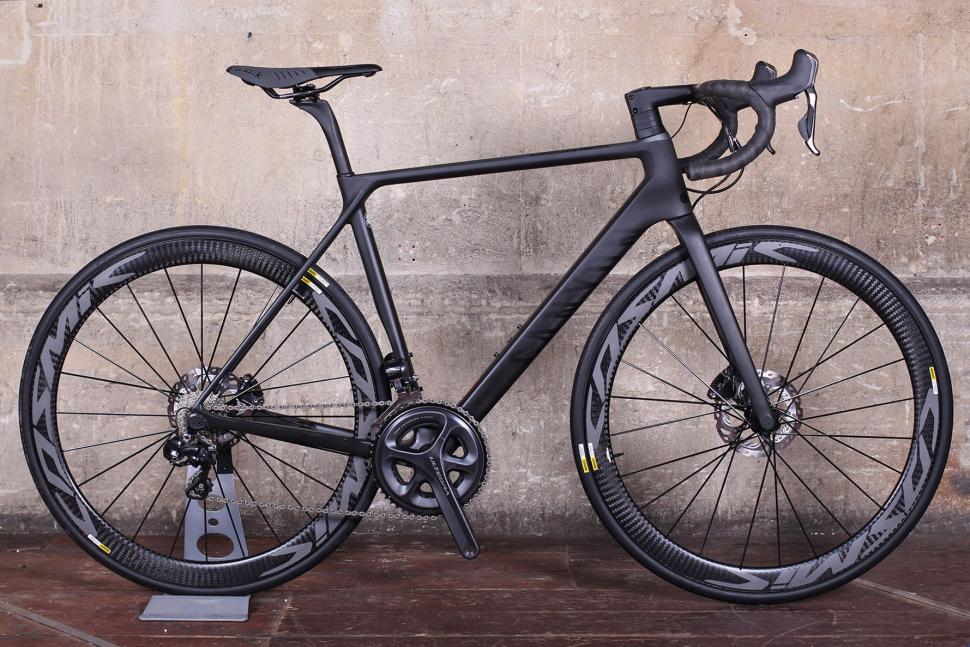
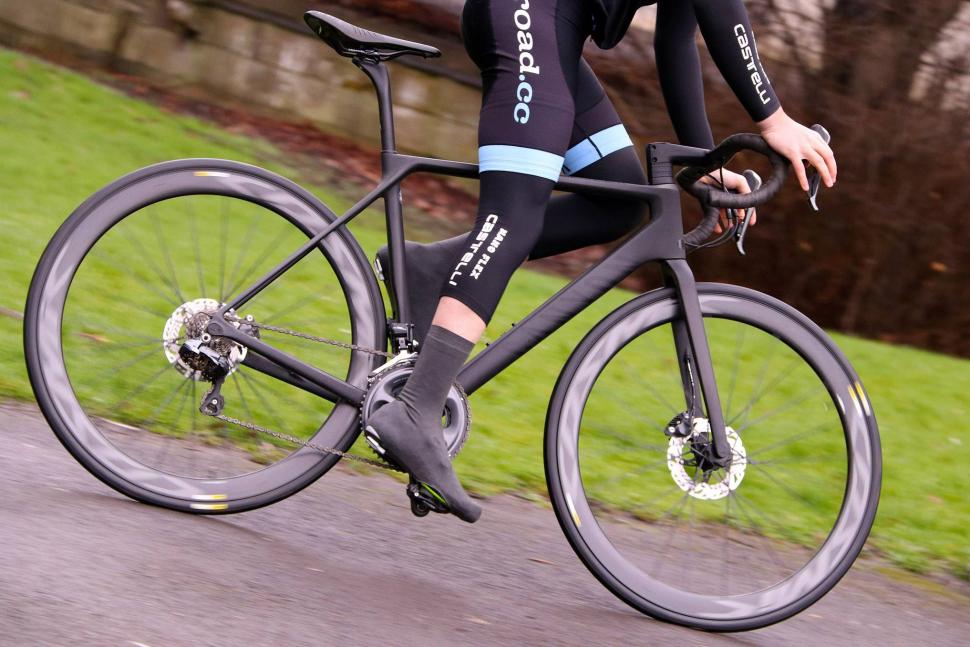
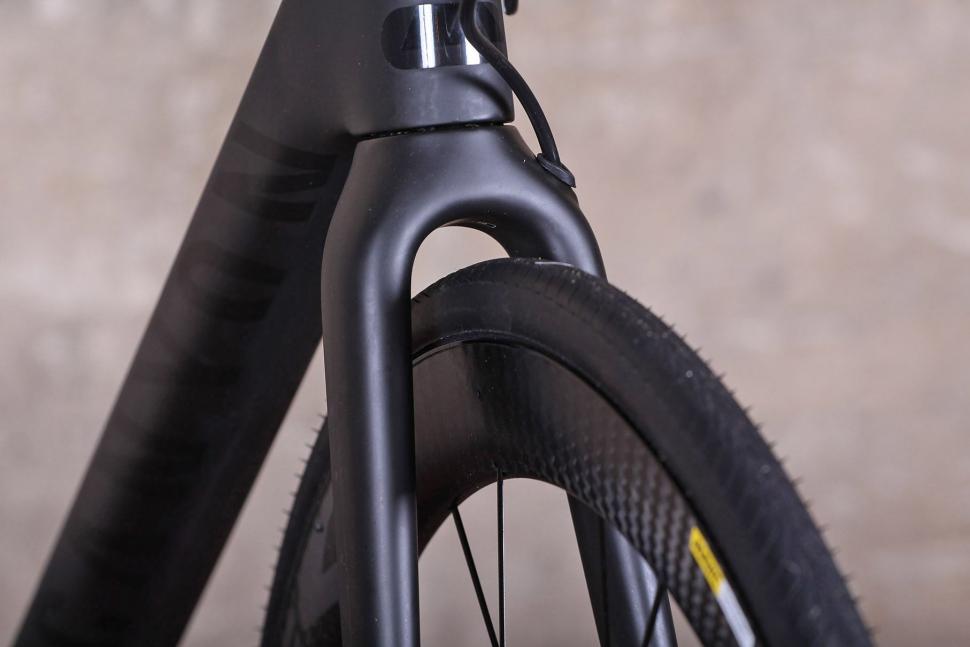
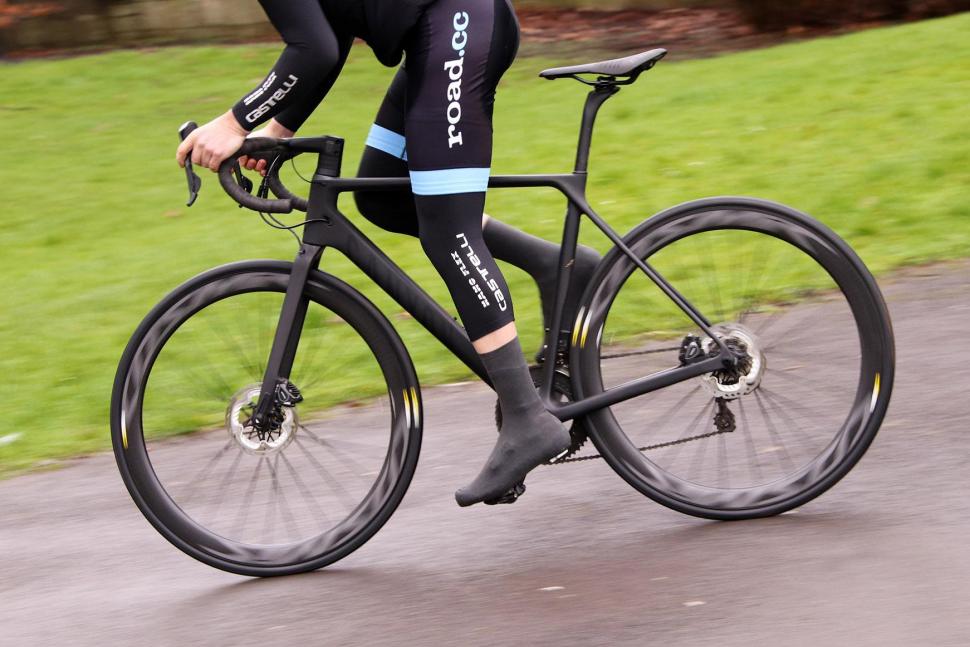
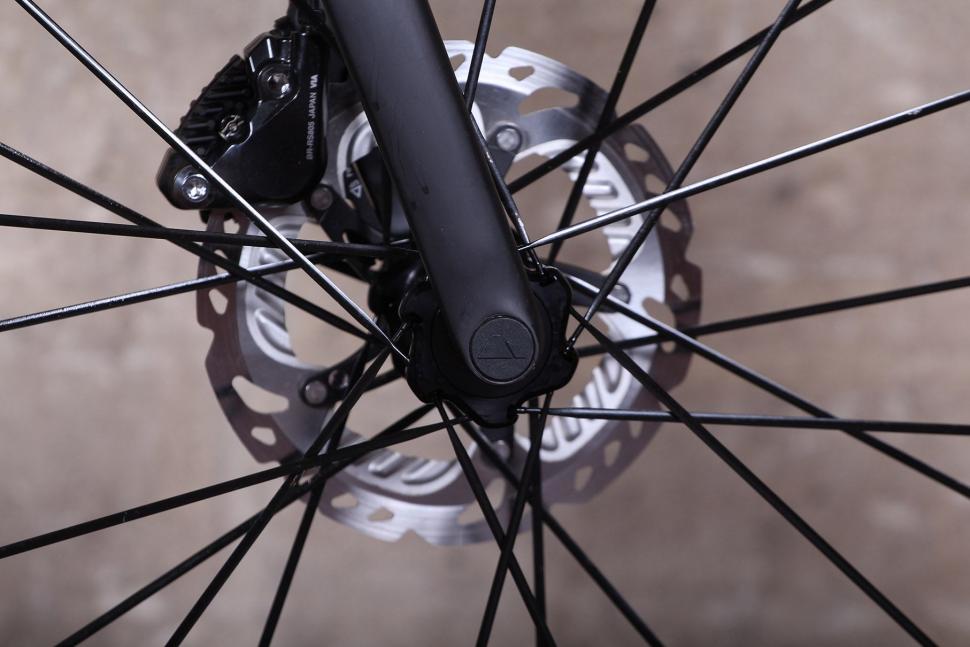
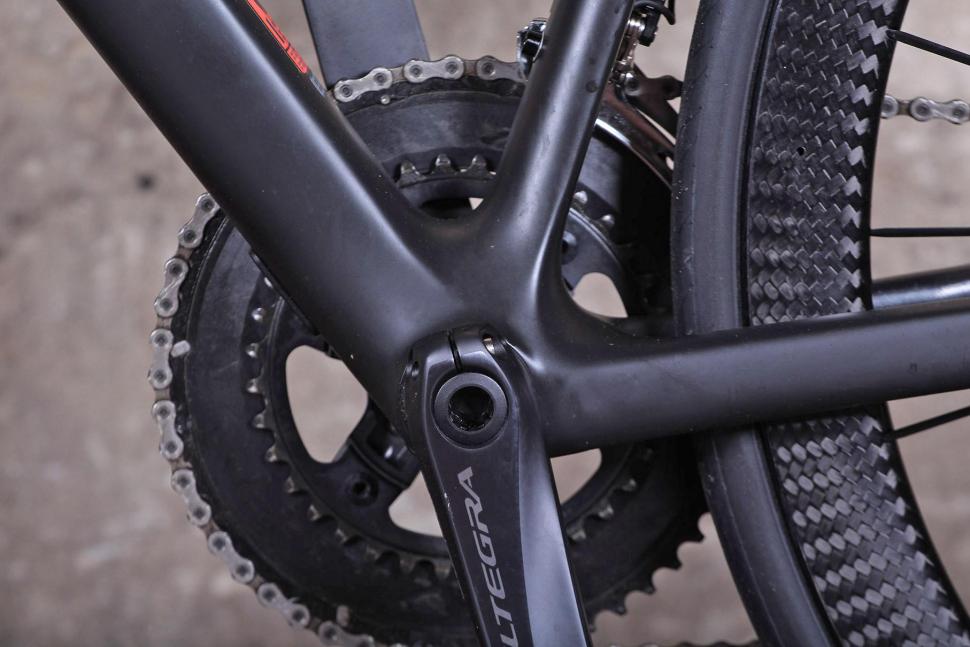
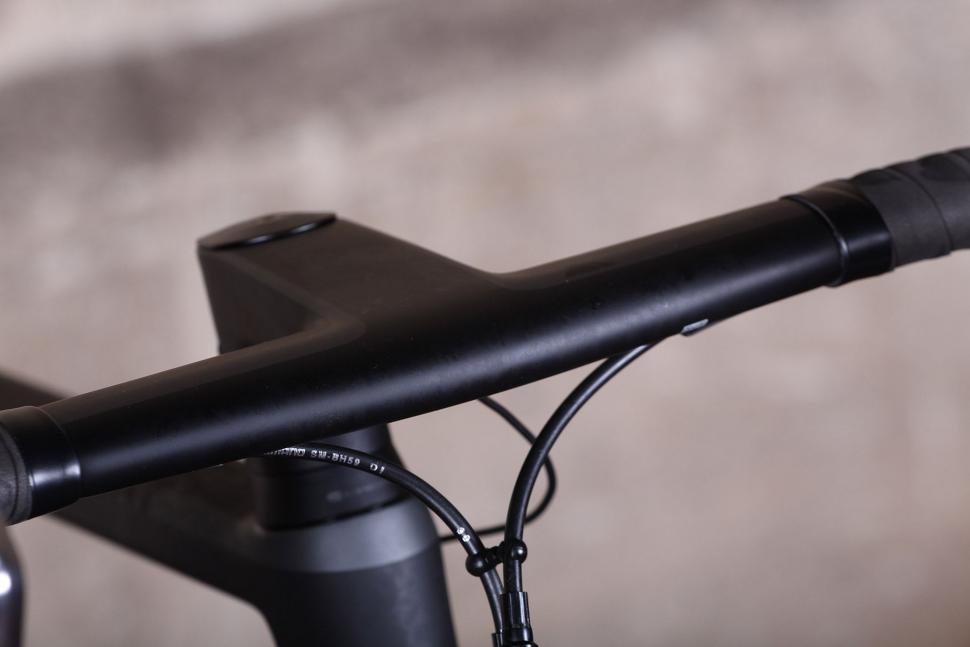
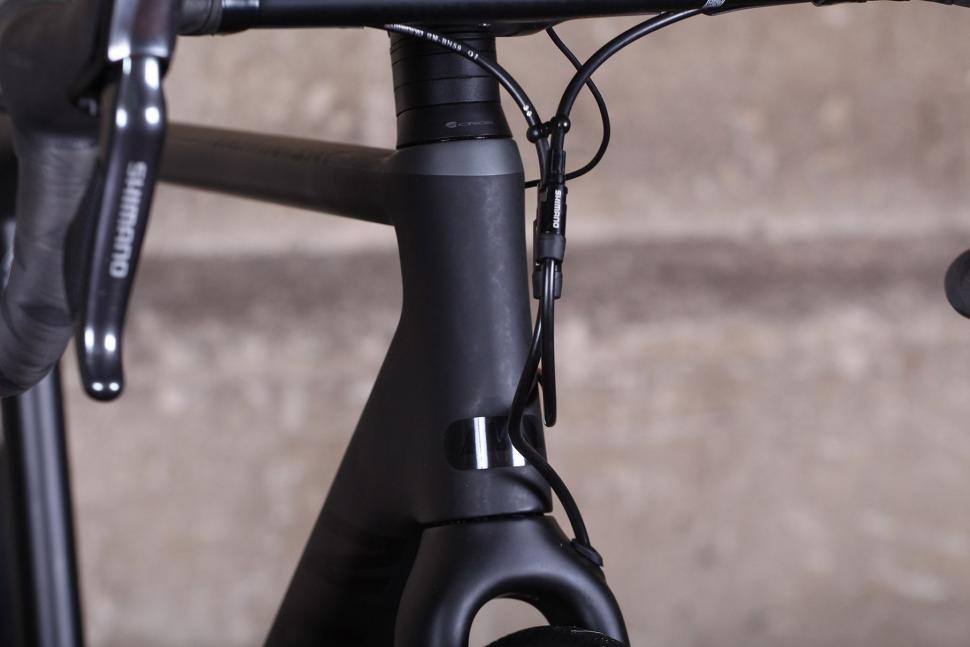
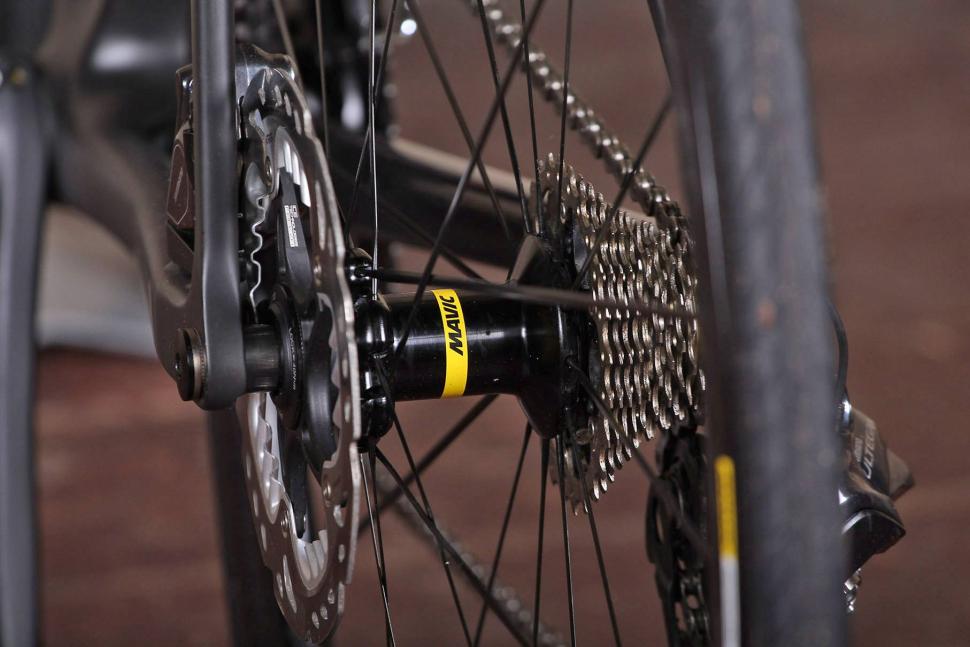
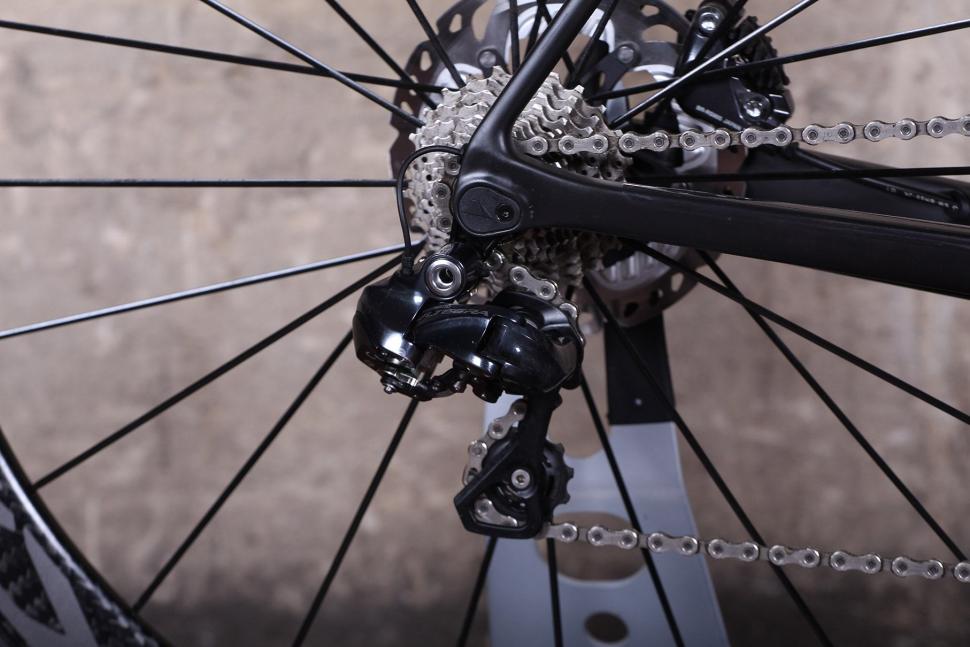

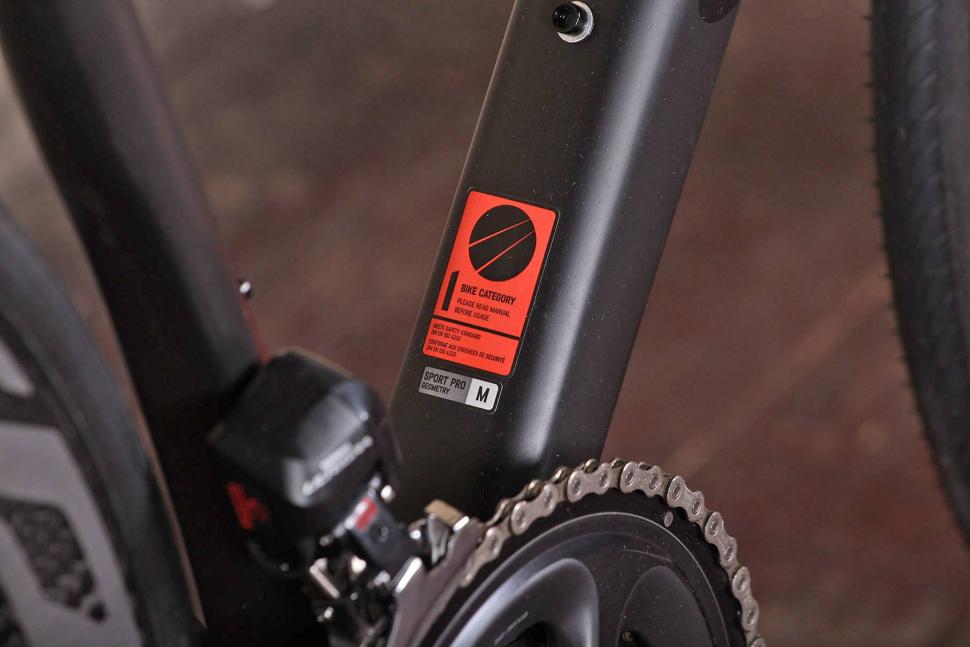
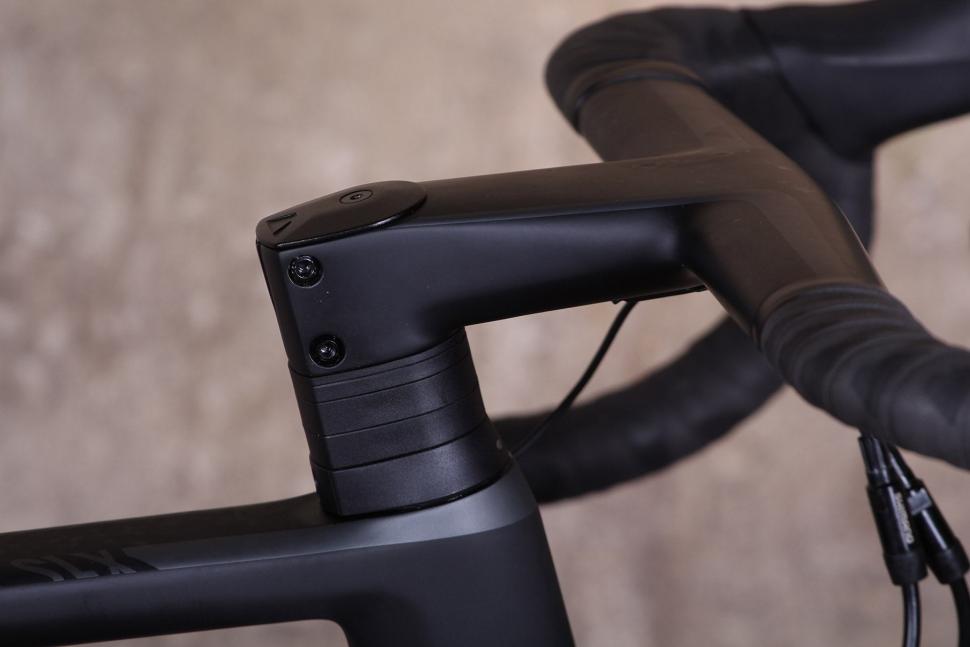

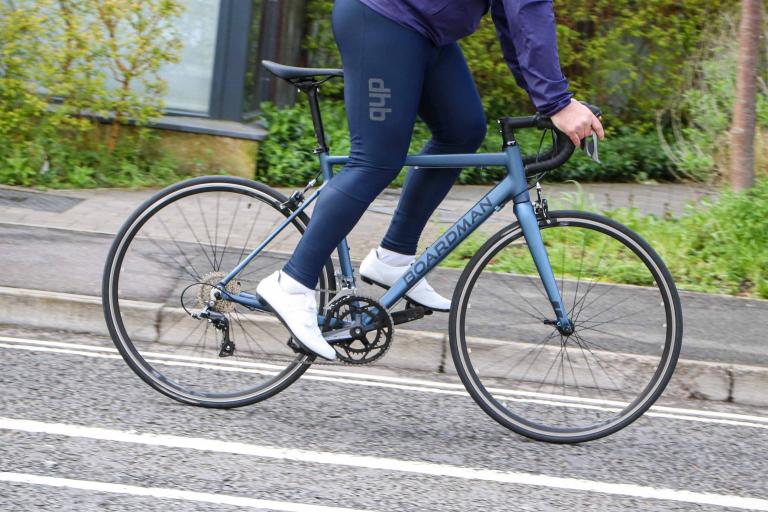
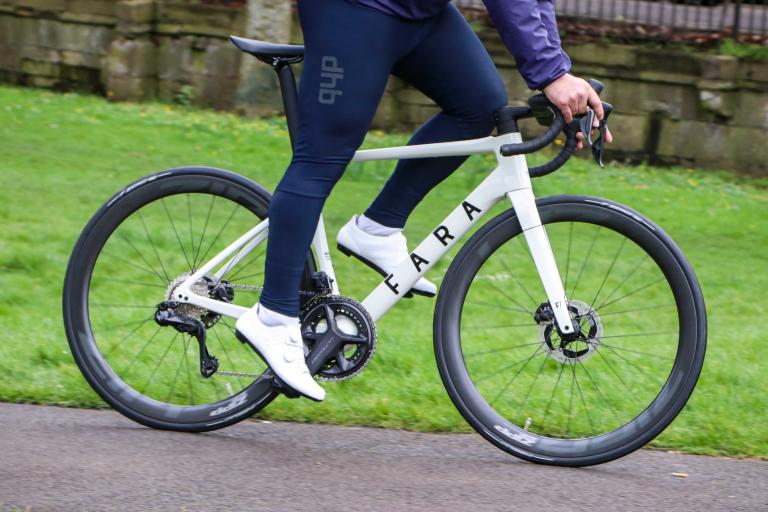
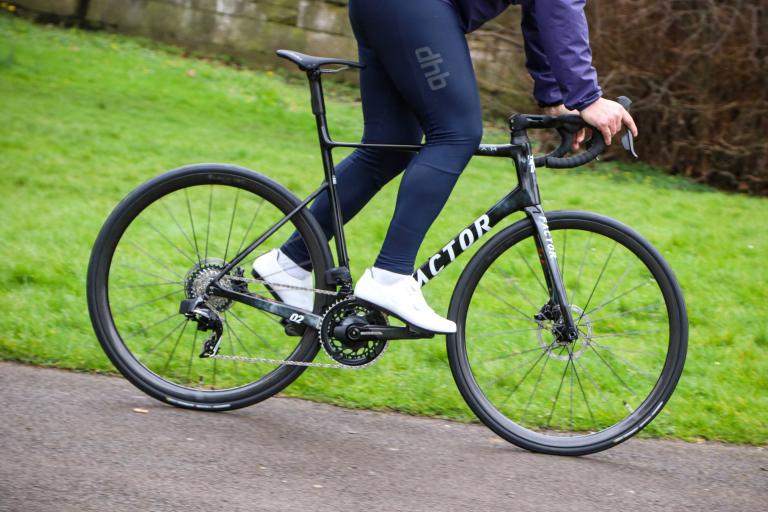
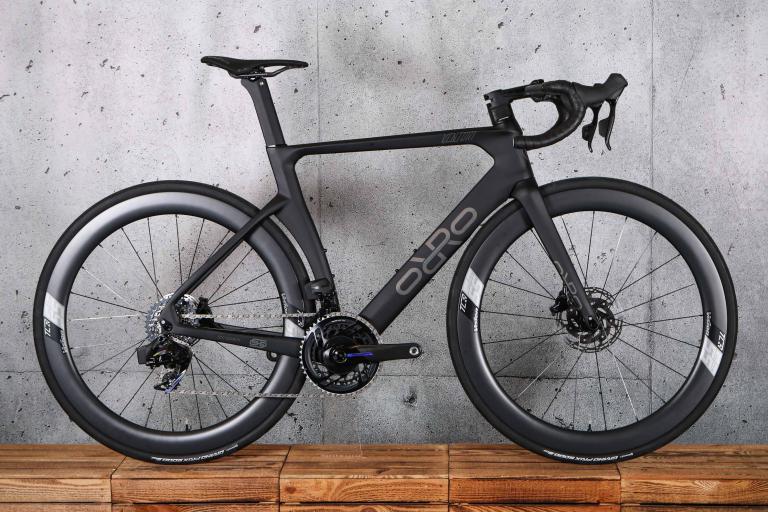
Add new comment
34 comments
When MTBs switched to discs, there was an initial period where a lot of XC bikes had discs on the front and rear rim brakes. I'm surprised no road bike manufacturers have ventured down this path. The benefit of braking power where it's needed most, allied to the weight saving of only having one disc and not needing to redesign the frame or in the case of after market discs, not buying a whole new frame to upgrade, would make a lot of sense.
Just no to lazy shortcuts that turn your bike into a goofy maintenance nightmare with a modulation disparity because you couldn't be arsed to design a new frame.
The only versions of this I saw seemed to be the cheap end of the market because you could very easily operate a cable disk with a standard V-brake lever and make a mediocre bike look much more hard core at minimal extra cost to the manufacturer - as wycombewheeler stated, fork manufacturers adopted disk brakes much quicker than the lower end frames did. I've got a set of old Rock Shox forks in the garage that has both disk and removable V-brake mounts - Hope, for one, made a set of bolts that neatly blanked off one mount and provided cable/hose routing for the other.
While it was (is?) possible to get hydraulic rim brakes, such as Magura, they had their own problems of crushing weaker rims.
The Sport Pro geometry isn't the raciest. The Pro geometry of the Aeroad takes that title.
Pages